Keep on looking.
That is a funny thing I’ve told myself these past two years. And indeed, since my last interview with a man who’s work I deeply admired, I continued my efforts for the SFG interview initiative to look for more people to cover and interview for the site. While I have largely focused on my review queue in the time since the last huge interview in 2022, I still had a small search going for anyone related to Telenet Japan who might be out there, willing to give me some cool nuggets of info. After all, they made a lot of pretty interesting games, and a lot of their staff would later go onto do bigger and better things.
While my efforts to look up and interview people at the old US Renovation Games division fizzled out rather quickly for me, I am happy to say that today I managed to interview someone who worked at Nihon Telenet during their most famous era, and one who ended up working on a series that definitely changed my life and funnily enough, was the main subject of my last big JP dev interview! This time though, we mostly talked about early computer stuff, some PC Engine/Genesis games you might recognize, and what it was like working for a game developer with a mixed reputation.
Thus, thanks to friends at Edia Co. Ltd and my translator Sushio O’Neal, I managed to set up an interview with the ex-Telenet programmer who goes by the preferred name “M.Y” these days, and like the last big interview, I have it both in English and Japanese, done in my usual Q&A style. And now, I present to you, this fun little interview!
Q1. Hello there! I interviewed your friend Tomie-san a few years ago, and it was around that time I found out how much you contributed to the game that helped change my life (Pokemon Red Rescue Team) in the process. Would you like to start the interview by describing something about yourself, or maybe what games you played that impacted you in a positive manner?
A1. This is M.Y.
Pleased to meet you.
About myself, I have worked in game development at
・Telenet Japan
・Climax
・Matrix Corporation
・Chunsoft (Spike Chunsoft)
Throughout, I have been involved in game development as a programmer, with works including program development, program support for subordinates, managing the programming staff’s schedule, etc.
I have been part of many games. Since there is a wide variety, so here are some notable ones:
・Valis: The Fantasm Soldier (SHARP X1)
・Golden Axe (PC-Engine CD-ROM2)
・Gaiares (SEGA MEGADRIVE)
・FEDA (SNES)
・Felony 11-79 (PlayStation)
・Torneko’s Great Adventure 3 (PlayStation 2)
・Pokemon Mystery Dungeon – Red Rescue Team / Blue Rescue Team (GBA / Nintendo DS)
・Shiren the Wanderer (Nintendo Wii)
・Fossil Fighters: Frontier (Nintendo 3DS)
・Shiren the Wanderer: The Tower of Fortune and the Dice of Fate (PSVITA / Nintendo Switch / STEAM)
・Our Era’s end (Android / iOS)
As for games that impacted me, here are some from my childhood (these are all arcade games):
・Missile Command
・RALLY-X
・ROBOTRON 2084
After graduating school, I had less time to play games as a hobby, but I’ve played some excellent titles for research, such as,
・Contra III: The Alien Wars (SNES)
・Pop’n TwinBee: Rainbow Bell Adventures (SNES)
・SEGA RALLY (SEGA SATURN)
・Tekken 3 (PlayStation)
・Jak and Daxter (PS2)
But as a hobby, I’ve played an extensive amount of
・True Love Story (PlayStation)
since its character art was to my taste.
Q2. I did research via your Game Shokunin interview for a project and learned about how you got started at Telenet, and how it was a rough job that had poor working conditions. Still, you worked on some pretty big hits for the company throughout the 80s, so I’m curious what made you stick around to work on games such as American Truck, Valis, and Final Zone for those early years, despite the poor management culture?
A2. I joined Telenet Japan at an important time between high school and college, since it’s when students are expected to select their first path to their future.
I worked part-time at Telenet Japan during my high school days. I’m not exactly sure if it was because college was not my thing, or if I was better suited in Telenet Japan, but I ended up staying there for a good while.
Not too later, I dropped out of college. I also left home, escaping to avoid contact with my family. I still remember my strong determination to not go back.
Despite the tight schedules, the development team in Telenet Japan was very lively. It was similar to an active school festival, which is why I think I felt comfortable enough to stick around for a good while.
I remember in Telenet Japan that there were many extremely ambitious seniors back then that wanted to make a huge financial success through game development. However, the work itself was very hard. In fact, I was hospitalized once for costochondritis from tuberculosis, probably from putting too much into my work tasks. Even after 36 years from that event, I still am mindful of the scar I had from that treatment.
*Note: I was not involved in Final Zone.
Q3. The PC Engine led to Telenet making games as part of newer subdivisions like Laser Soft and RIOT, yet even during their days of putting out PC Engine CD versions of Valis, Exile, and Cosmic Fantasy, you still stuck to computers before eventually shifting to the Mega Drive/SFC. What about PC98 made you continue working on ports even as teams started moving to CD based media?
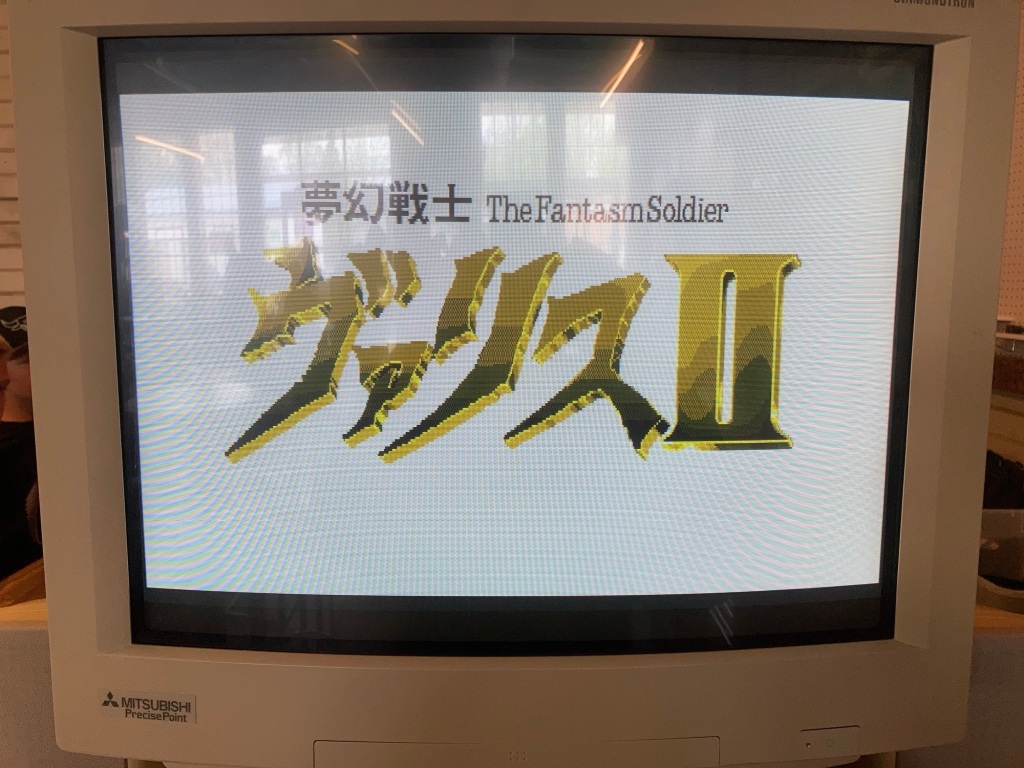
A3. Being part of Telenet Japan, us employees worked on game development projects scheduled by our administration team at the time, so there were many projects that I do not know the background of how they came to start.
Telenet Japan used to be a gaming software manufacturer focused on PC (i.e. NEC PC8801SR, PC9801), but the administration team eventually made a call to change our focus towards CD-ROM and consumer games. Following that, our development team made a complete transfer over to consumer platforms (notable one being the PC-Engine CD-ROM2).
Valis III and Cosmic Fantasy developed in Laser Soft were games that started up being specialized for PC-Engine CD-ROM2 (Although I may be remembering wrong).
I had quickly transferred to consumer game software development as well in the porting project for Golden Axe.
As for how the subdivisions went out, we first had Wolf Team organized, and then Laser Soft was found after that. I did intend to transfer over to Wolf Team, but I couldn’t participate in the start-up due to my hospitalization, so I had remained in the head office (Renovation ~ RIOT) until I left.
Q4. If i’m not mistaken, you ended up working on a bunch of sound drivers for Telenet games. How was it helping to program the “Telenet sound” and getting lots of excellent OSTs such as Valis II or Tenshi no Uta to sound fantastic? Any particular memories of working with composers such as Tenpei Sato?
A4. Sound programming requires programming skills that slightly differ from a common game development, so having programmers, who are put on board for game development, conduct sound programming along with their regular work is usually difficult.
In the early days of Telenet Japan before I was hired, they had a skilled sound creator that does both music composition and sound driver engineering (He worked on composing tracks for The Albatross, Final Zone and Shinra-Banshou.) However, he was specialized for PC9801, so the sound driver engineering for other consoles were left for me to be in charge. I had developed the sound drivers as I learned from the said sound creator, one thing at a time.
For PC-Engine CD-ROM2 games, such as Golden Axe, Exile and Tenshi no Uta, the BGM tracks were CD-DA (directly played from the CD-ROM), meaning the tracks were not from my sound drivers, but completely made and mastered by our sound professionals. I personally have not had any professional training on music, so I felt the sound quality plateauing due to that. Also, around that same time (from Playstation and on, to be exact), CD-DA or platform drivers have become the main trend for musical tracks, so developing sound drivers in-house had lost its meaning. So unfortunately, I have not developed sound drivers since then.
Tenpei Sato was an energetic person with a very positive attitude. Even in an office that tends to be gloomy under a tight development schedule, I remember him being the one that always cheered up the mood.
He was also in charge of looking over a young videogame musician, who was really into fan works, working in Telenet Japan at the time.
Q5. During the 16-Bit era, you worked on a few ambitious titles for Telenet, with one of my favorites being Psycho Dream, which got a US release via Switch Online in 2021. Back in the 90s, a US Version titled DREAM PROBE was announced but canceled, and one of the big mysteries regarding it was what the main characters would be renamed to for the western market; a screenshot shows that Ryo would have been renamed to Ron, so I am curious if you know anything or worked on this canceled US version, and how it ended up being unreleased, and if perhaps you know what the character Maria would have been renamed to for the US market.

A5. Psycho Dream was the 1st SNES title released from Telenet Japan’s 1st Business Dept. (RIOT). I remember our sales group being very enthusiastic about this, as well as myself putting a lot of energy into this (although it ended up not selling well).
The development of the North-American version should have been completed immediately after the Japanese version’s release, but unfortunately, I was not aware of its release schedule, or if it was actually released or not. However, I do recall some talks about how the work up to its release was not smooth, such as about some issues with audio noises (although I cannot say much, since it was my own sound driver). Also, looking back with modern eyes, the game itself was pretty rough on its edges. Bold may be one way to put it, but I believe we could have taken a lot more care for refinement.
Character name localizations were pretty common then, as we have localized the protagonist’s name in Gaiares on the Mega Drive as well, so I did not have much thought about changing our character’s names. However, there were some unique localizations as we had to rename WOZ, a self-reinforcement unit in Gaiares, to TOZ, due to avoiding naming conflicts with Wozniak in North America.
Nevertheless, the names themselves were up to the localization staff, so most of the names did not have much meaning to me, or at least that is what I believed at the time.
Q6. Other notable 16-Bit titles you programmed for Telenet back then were the Mega Drive version of Ys III, and the strange RPG Traysia. What was it like working on those vastly different RPGs, and how did Ys III end up as an outstanding port, while Traysia had weird bugs such as the ability to equip endless amounts of defensive items to the player character, and stuttery scrolling?
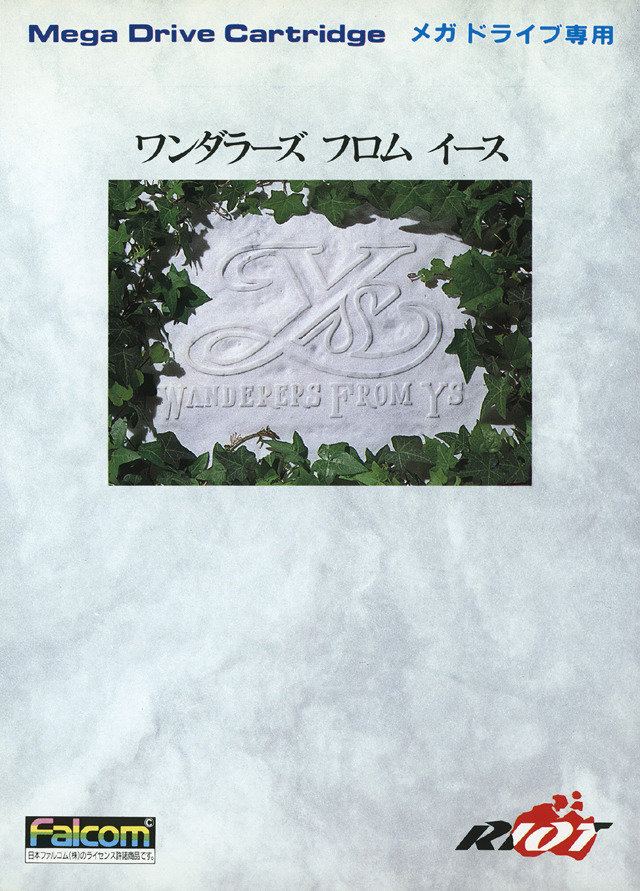
A6. Ys III was initially progressing to use its PC8801SR version at the time, but considering the hardware features of the Mega Drive, we were given an instruction that “it must be produced up to a quality close to its SHARP X68000 version”, which was a huge headache for us.
When we were developing Gaiares, we did a deep study of the Mega Drive. It had significantly more freedom and more conveniently designed for development-purposes compared to our previous consumer consoles (i.e. PC-Engine CD-ROM2), so we believe the end-product of that version was pretty satisfying. However, the 3rd party sound-driver, which was extremely popular at the time, produced a magnificent sound and received high praise from our consumers. I remember having some mixed feelings about this to be honest, as it was not my own sound driver anymore.
As for Traysia, I did not have direct involvement with its programming, but I was in charge of schedule management and tool development.
This game had an extremely rough sail, and we deeply apologize to our consumers that it was unfortunately released in an extremely unsatisfactory quality. The design base for the tools and game engines used for Traysia was the same as Magical Princess Silky Lip, which was almost developed in parallel at the time. So Traysia’s design base should have been completely different from Ys III (as I vaguely recall).
Q7. What led to you deciding to depart from Telenet and move onto Climax and other companies; was it the impeding financial trouble they were going through in 1994, or just everything with the work culture catching up and better development positions opening up?
A7. Although there are parts I don’t exactly remember about when I was leaving Telenet Japan, I do recall having my own discrepancies with their gaming development in their updated business roadmap, and upon some negotiations, I ended up leaving the company.
This was not only myself, but most of the main development staff had left almost at the same time, meaning there probably was almost a complete turnover in the 1st Business Dept. (RIOT Telenet Japan) that I used to belong to.
However, I must note this leave was not due to conflicts in earnings. I had no complaints for how much I was paid for the time.
Q8. Of all the games you assisted with, which is your favorite title you contributed to, and any notable memories of the experience? My personal favorite game you had involvement in is Pokemon Mystery Dungeon: Red Rescue Team (GBA), followed by Ys III. (MD)
A8. I’ve become too familiar with all of the details in the games that I’ve been involved in, so I don’t usually find them enjoyable due to lack of “freshness”. However, I remember working very hard in developing Torneko 3 with attention to the very fine details, so I personally find this as one of my favorites.
Other than that, I worked on Oyaji-Ou (PC9801) and its advanced successor Kyuin (PlayStation) as free software without any limitations, so the contents in these games really reflect my taste.
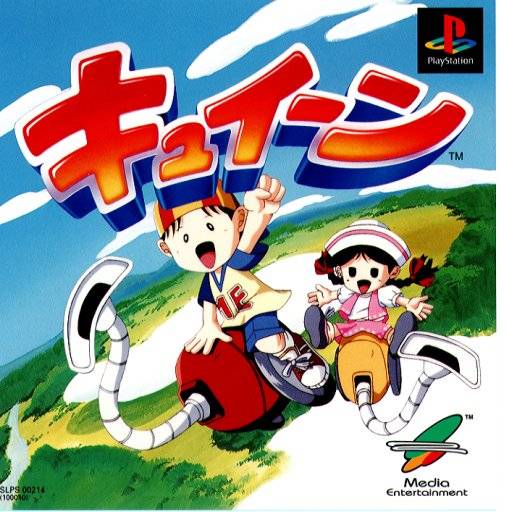
Q9. Post Telenet, you worked for Climax for a while on some pretty cool games (Lady Stalker), and then later worked on the Mystery Dungeon Series with Torneko 2 for PS1. The MD contribution I’m most fascinated by is how you later worked to help port it and Torneko 3 to the Game Boy Advance, as both games are pretty ambitious titles for the system! If possible, would you like to share some memories working on those GBA ports?
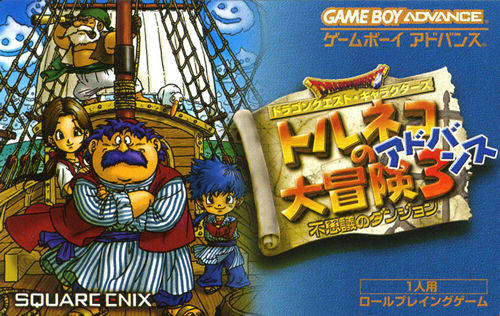
A9. The GBA port of Torneko 3 almost fully reuses its PS2 version’s program source, with some bug fixes and design improvements. However, we had to partially cut down some scale, such as how the map randomizer worked.
On the other hand, we made some minor changes for the limitations we had on the PS2 version, particularly with it having to read from the CD-ROM (i.e. The sprite motion for Mod Rod).
Even with its display features, GBA’s CPU capacity was extremely high, so porting the dungeon portion went a lot smoother than expected. When porting, we left the villages and towns, the areas outside of dungeons, to our experienced staff from Chunsoft at the time (although it was mostly mimicking the references shown).
*Note: I was only involved in Lady Stalker for its sound driver.
Q10. I’d like to let you know that Pokemon Mystery Dungeon has gotten a pretty big reputation in the west, mainly for strong scenario writing and the fun gameplay mechanics. People particularly like the IQ system those games used for a while, and with Red Rescue Team using a lot of elements from Torneko 3 GBA, I’m especially curious if you’d be able to share any programming stories working on that game, or what it was like working with creatives like Shinichiro Tomie.
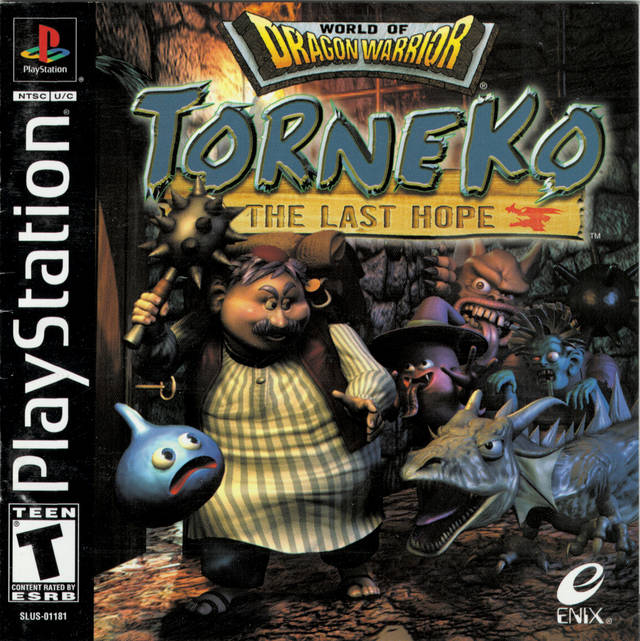
A10. Ever since Torneko 2, I was not in charge of towns or shops outside of dungeons. Instead, I was mostly in charge of the processing required for dungeons themselves.
As mentioned in Q9 above, the programming for scenarios progressing outside of dungeons were left to our experienced staff from Chunsoft at the time, so I did not have much interaction with Mr. Tomie. I’ve worked in fine collaboration with the staff in charge of establishing the dungeon features, but I had almost no involvement in their detailed designs. Our work was mostly involving responding to the instructions provided..
Q11. Last but not least, anything you have to say to modern fans of Telenet? Assorted Telenet games have gotten releases on modern systems, so the catalog seems to be coming back into availability. Last year’s Telenet Shooting Collection included Gaiares, along with a recent Evercade collection and Retro-Bit reissue, which all helped introduce a lot of my friends to the game.
A11. Telenet Japan had some harsh reviews as they forced poor-quality games on sale at times. However, I’m glad to hear those games were given another opportunity for re-release. It also feels as if my past self was acknowledged to some extent.
In some anonymous online discussion boards, I’ve had some harsh criticisms (or verbal abuse), specifically naming my name, and I remember my heart sinking many times from reading those. However, looking back overall, there were many rough games that struggled in quality, but each of them have at least one unique detail worked into them, so it would be extremely grateful if players could take a little bit of their time to play them.
Although, there is one thing I am curious about North American releases, and this was also true for games developed by Telenet Japan for the Mega Drive (Genesis). I have always found it strange that the characters in the package illustrations often become excessively muscular and robust in the North American versions. Was there such a demand in North America?”
That is all. Thank you.
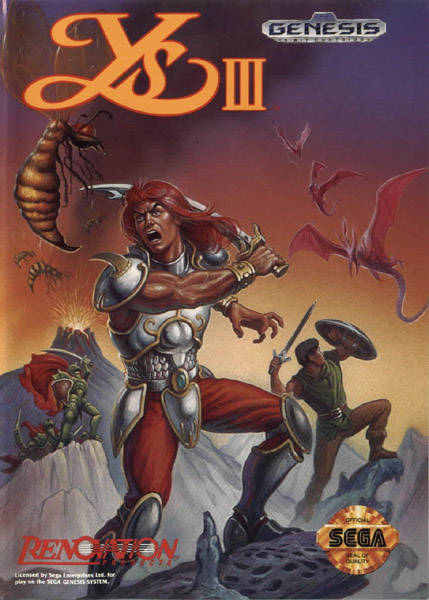
Q1. 初めまして!Connor Nicholsと申します。『ポケモン不思議のダンジョン 赤の救助隊』を手がけた冨江慎一郎様へ、数年前にメールインタビューをさせて頂いた者であり、私の人生に大きな影響を与えた本作をM.Y様もお携わりになっていることもあり、この度是非ともM.Y様にもインタビューしたく連絡させて頂きました。
まず突然で恐縮なのですが、M.Y様ご自身について簡単な自己紹介を頂けますでしょうか?又、M.Y様がプレイされて影響を受けたゲームの思い出等もあれば是非教えて下さい。
A1. 私の略歴としては
ゲーム開発での所属履歴は
・日本テレネット
・クライマックス
・マトリックス
・チュンソフト(スパイク・チュンソフト)
となっています。
一貫してプログラム作成/部下スタッフへのプログラムサポート/プログラムスタッフの
スケジュール管理等、プログラマーとしてゲーム開発に携わってきました。
かかわったタイトルをすべて挙げるのは、数が多いので代表的なもののみ
・無限戦士ヴァリス(SHARP X1)
・ゴールデンアックス(PC-Engine CD-ROM2)
・ガイアレス(SEGA MEGADRIVE)
・FEDA(スーパーファミコン)
・RUNABOUT(PlayStation)
・トルネコの大冒険3(PlayStation2)
・ポケモンダンジョン赤の救助隊/青の救助隊(GBA/NintendoDS)
・風来のシレン3(NintendoWii)
・カセキホリダームゲンギア(Nintendo3DS)
・風来のシレン5+(PSVITA/NintendoSwitch/STEAM)
・世紀末デイズ(Android/iOS)
といったところです。
影響を受けたゲームとしては、
子供のころであれば(すべてアーケードゲーム
・ミサイルコマンド
・ラリーX
・ROBOTRON 2084
社会人となってからは、趣味でゲームを遊ぶことは少なくなりましたが、
・魂斗羅スピリッツ(スーパーファミコン
・ツインビーレインボーベルアドベンチャー(スーパーファミコン
・セガラリー(SEGA SATURN
・鉄拳3(PlayStation
・ジャックダクスター(PS2
などは素晴らしい完成度で研究のためにプレイしていました。
・トゥルーラブストーリー(PlayStation
はキャラクターイラストが好みだったので、趣味で相当プレイしました。
Q2. 以前私が上記『救助隊』について調べていた際、M.Y様について知ることとなったキッカケは『ゲーム職人 第1集』のM.Y様へのインタビューでした。そこでM.Y様はテレネット社でお勤めになり、厳しい職場環境からご自身のキャリアをスタートさせたと仰っております。しかし80年代に同社の中で『アメリカントラック』、『夢幻戦士ヴァリス』や『FINAL ZONE(ファイナルゾーン)』といったヒット作を手掛けたことも存じ上げています。多忙な職場に留まり、様々なヒット作を作り上げる成果に繋がった、当時の原動力や動機等があればお聞かせ下さい。
A2. 日本テレネットに入社するときは、高校~大学へ進学する、進路選択の重要な時期でした。
大学が性に合わなかったのか、高校時代からアルバイトで勤務していた日本テレネットが
相性が良かったのか、そこに居ついてしまうようになってしまいました。
そしてすぐに、大学は退学することになり、実家からも飛び出すような形になったので、
家族とも疎遠になり、もはや後戻りはできない覚悟をしていたことを思い出します。
日本テレネットの開発現場は学園祭の盛り上がりのような雰囲気で居心地が良かったので、
ハードなスケジュールなどでも続けられたのだと思います。
当時のテレネットでの先輩方は、ゲーム制作で大きく稼ぐ、という野心が非常に強い方が
多かったと記憶しています。
ただし、 やはりかなりハードだったのは事実で、仕事に根を詰め過ぎたのが原因なのか、
結核からの肋膜炎で一度入院しています。
あれから36年ほど経った最近でも、その時の治療跡にはいまだに気を使っています。
※私は「ファイナルゾーン」には携わっておりませんでした。
Q3: テレネット社は新日本レーザーソフト社やライオット社といった新たな分社とPCエンジンでゲーム開発をされ、PCエンジン SUPER CD-ROM2の『夢幻戦士ヴァリス』、『エグザイル』や『コズミック・ファンタジー』シリーズがリリースされましたが、M.Y様はメガドライブ/スーパーファミコンへ移行する前まではPCで引き続き開発をされていたと存じております。周りのチームがCDメディアが移行する中、PC98で開発を続けた理由は何故でしょうか?
A3. わたしは日本テレネットの1社員であり、当時経営陣から提示されたプロジェクト計画に
従って開発を行っていたため、どのような経緯で各プロジェクトが開始されたかは私にも
はっきりとはわからないことが多いです。
日本テレネットはPC(NEC PC8801SRや、PC9801等)中心のゲームソフトメーカーでしたが、
ある時期、CD-ROMやコンシューマゲームへ軸足を切り替える、と言う経営陣の判断があり、
それに合わせて我々開発もコンシューマープラットフォーム(特に PC-Engine CD-ROM2)
にほぼ完全に移行しています。
特に「ヴァリス3」「コズミックファンタジー」を手掛けたレーザーソフトは、PC-Engine
CD-ROM2に特化した形でスタートアップしたと聞いています(この件に関してはちょっと
記憶があいまいな部分もあります)
私自身もそれに従い、「ゴールデンアックス」移植プロジェクトでコンシューマーゲーム
用ソフト開発に早期に移行しています。
分社化の流れは、まずウルフチームが創立され、そののちレーザーソフトが創立される順
となっており、私は退社するまでずっと本社(Renovation~RIOT)の所属でした。ウルフ
チームへ移籍の意思もありましたが、入院のためスタートアップに参加できず、そのまま
残った形です。
Q4. M.Y様はテレネット社製ゲームのサウンドドライバーの多くにもお関わりになれていたとのことですが(もし誤解あればすみません)、テレネット社特有の”サウンド”のプログラミングや『ヴァリス2』や『天使の詩』シリーズの素晴らしい楽曲を製作された当時はどのような経験でしたか?又、作曲家の佐藤天平様とお仕事された際の思い出等はありますか?
A4. サウンドプログラムは、単なるゲーム開発とはちょっと別のプログラム能力が要求される
部分があり、普通にゲーム開発のために集められたプログラマーが、ゲーム開発と並行
して行うには難しいことがあります。
もともと草創期の日本テレネットには、私が入社する前から、作曲もサウンドドライバー
製作も手掛ける、優秀なサウンドクリエイターの方がおりましたが、その方はPC9801専門
の方だったので、ほかの機種でのサウンドドライバーを製作するのは私が担当しました。
(「アルバトロス」、「ファイナルゾーン」、「神羅万象」などの作曲も手掛けた方です)
その方から一つ一つ教わるような形でサウンドドライバーを開発していきました。
「ゴールデンアックス」をはじめ「エグザイル」「天使の詩」など、PC-Engine CD-ROM2
のタイトルでは、BGMサウンドはCD-DA(CD-ROMから直接再生する)が主でしたので、私の
サウンドドライバーを使ってBGM演奏することはせず、 サウンドマスター制作まで完全に
サウンド専門のスタッフにお任せしていました。
わたしは音楽に関する専門の教育を特に受けてはいなかったので、私の音楽的素養の問題
でサウンドクオリティが頭打ちになってくるという限界も感じていました。
また、そのころ(正確にはPlayStation以降)から、CD-DA再生したり、プラットフォーム
で準備されたドライバーを使用することが主となり、 もはやゲーム開発現場でサウンド
ドライバーを開発する意義はほとんどなくなりましたので、残念ながら、サウンドドライ
バー開発を行うことはありませんでした。
佐藤天平氏は非常に明るい方で、キツい開発スケジュールの中で暗くなりがちな開発現場
を明るく盛り上げてくれる方だったと記憶しております。
当時テレネットに勤務していた、同人活動にも熱心だったた若いゲームミュージシャンの
面倒もよく見ていただきました。
Q5. 16ビットゲームの時代、テレネット社では幾つか挑戦的なタイトルの開発に携わっていたことも聞いております。その中で私のお気に入りの『サイコドリーム』といった、最近2021年にNintendo Switch Onlineでアメリカでもリリースされたタイトルがあります。しかし同タイトルの北米版は90年代で『DREAM PROBE』と題されて表されたにも関わらず販売中止となった幻の作品でしたが、このタイトルについては様々な憶測があります(例えば主人公のシジマ・リョウが北米版を宣伝したスクリーンショットではRonと名づけられていたり)。『サイコドリーム』について、M.Y様がこの北米版『DREAM PROBE』の開発に関わったり、或いは何か知っていること(惜しくも販売中止となってしまった経緯、もう一人の主人公トバリ・マリアの北米版の名前…等々)があれば是非お聞かせ下さい。
A5.「サイコドリーム」は、日本テレネット第一事業部(RIOT)がスーパーファミコンで販売
する1本目のタイトルということで、営業陣も非常に気合を入れていて、そのため私も
かなり注力した記憶があります(あまり販売成績は芳しくなかったのですが)
北米版は、 日本版発売直後から、すぐに開発して完成させていたはずなのですが、 どの
ようなスケジュールで、実際に発売されたのか、発売されなかったのかに関しても、残念
ながら私は知りませんでした。
なんだかサウンドノイズ等の問題でスムーズに発売できない云々、という話があったよう
な記憶はあります(私自身のサウンドドライバーだったので言い訳はできないのですが)
ゲーム自体も、今の目から見ると、結構粗削り、 よく言えば大胆、 悪く言えば大雑把で、
丁寧さに欠ける内容だったなとは思います。
MEGADRIVEの「ガイアレス」なども英語ローカライズする際に主人公の名前を変えましたし、
それは良くある話なので、キャラクターの名前変更は、特に気にしたりはしなかったです。
「ガイアレス」の自機の強化ユニットの名前が、日本語版では「WOZ」と付けたのですが、
北米ではWozniakとの関連から、「TOZ」に名前を変更されたりもしました。
単純にローカライズをお願いするスタッフの方の判断で、深い意味はないだろうと思って
いました。
Q6: 他にM.Y様がテレネット社でプログラミングされた著名な16ビットゲームの中で、メガドライブ版『イースIII』と『港のトレイジア』がありました。このある意味対称的とも言える2本のRPGの開発について何か思い出等はありますか?(尚、メガドライブ版『イースIII』は素晴らしかったですが、『港のトレイジア』は主人公の防具の無限装備バグやカクカクとした操作性が目立っていました。失礼や差し支えがなければ、こういった仕上がりのギャップの理由等も何かあれば是非お聞きしたいです)
A6.「イース3」は、当初PC8801SR版を参考にするように進んでいたのですが、MEGADRIVE
というハードウェアの特性などから、当時すでに発売されていた、「SHARP X68000 版に
近いプロデュースにしなければいけない」と指示されて困ったことを覚えています。
「ガイアレス」開発の際に MEGADRIVE は結構研究していて、かつそれまで携わってきた
コンシューマー機(PC-Engine CD-ROM2等)に比べても、非常に自由度が高く、また開発
しやすい設計であったため、満足できる仕上がりにすることができたと思っています。
ただしサウンドドライバーは私のものでなく、当時非常に評価の高かった、社外のサウン
ドドライバーを採用した結果、 出ている音のクオリティも素晴らしく、 ユーザーからの
評価も非常に高かったので、微妙に悔しい感覚だったのも覚えています。
「港のトレイジア」は、私は直接のプログラムの関わり合いはなく、スケジュール管理や
ツール作成で携わっていました。
これは相当難航し、当時のユーザーたちには申し訳ありませんが、かなり基準に満たない
クオリティで発売されてしまったようで残念に思います。
「港のトレイジア」で使用したツールやゲームエンジンの設計ベースは、当時、ほぼ同時
進行で開発していた「魔法の妖精シルキーリップ」と同じもので、「イース3」とは別物
だったはずです。(ここはちょっと記憶があいまいです。)
Q7: M.Y様がテレネット社からクライマックス社他へ転職された理由は何故でしょうか?(1994年のバブル崩壊や職場環境の変化、他の方が条件が良かった、と勝手に思っていたりします)
A7. 日本テレネットを退社する当時のことははっきりとは覚えていない部分も多いのですが、
経営ロードマップの変更で、 それからの日本テレネットでのゲーム開発に関して、 同意
しづらいことがあり、交渉の結果、そのまま退社という判断になったという記憶です。
私だけではなく、主要な開発スタッフの多くがほぼ同時期に退社し、私の所属していた
第一事業部(RIOT日本テレネット)の開発スタッフは、ほとんど総入れ替えに近いような
状況になっていたと思います。
当時の報酬に関しては全く不満はなかったので、決して報酬が原因ではありません。
Q8: M.Y様が携わったゲームの中で一番のお気に入りのタイトル等はありますか?そのゲームの開発時の思い出等もあれば是非お聞かせください。(個人的にM.Y様がお関わりになったタイトルで一番好きなはゲームボーイアドバンスの『ポケモン不思議のダンジョン 赤の救助隊』です!その次に好きなのはメガドライブ版『イースIII』です。)
A8. 自分自身で開発した作品は、 隅々まで把握してしまっていて、 目新しさに乏しいので、
あまり楽しめないことが多いのですが、「トルネコの大冒険3」はかなり開発に苦労を
して、細かい部分にまで注意を払って製作し、自分でも気に入った作品になっています。
ほか、フリーソフトとして作成した「親父王」(PC9801用)、それの発展型といえる
「キュイーン」(PlayStation)は、制約なく自由に作れたので、私好みの内容になって
います。
Q9: テレネット社からクライマックス社へ転職されたM.Y様は様々な面白いゲーム携わっており(『レディストーカー』等)、後にプレステ1の『トルネコの大冒険2』といった『不思議のダンジョン』シリーズの開発に関わることとなります。その次作である『トルネコの大冒険3』のゲームボーイアドバンスへの移植も『不思議のダンジョン』シリーズの中でもかなり大胆な移植であり、『2』も『3』もどちらもハードウェアのスペックに対して挑戦的なタイトルでとても感服しております。もし宜しければ、当時のゲームボーイアドバンス版への移植をした時の思い出等をお聞きしても宜しいでしょうか?
A9. GBA 版「トルネコの大冒険3」は、PS2 版の不具合や設計が良くない部分を修正しつつ、
ほぼそのままPS2 版のプログラムソースを流用しています。
ただし、ランダムマップの仕様など一部はスケールダウンせざるを得ませんでした。
逆に、PS2 版では CD-ROM からデータをリードしてくる制約のために思うとおりにならな
かった、一部の部分を変更しています(変化の杖の動作等)
GBA は画面表示性能に比べて、CPU 能力が非常に高く、ダンジョン部の移植は思ったより
スムーズに行えたと思います。
ダンジョン外の村や街の部分は、当時のチュンソフトのベテランスタッフにお任せして、
(見様見真似に近い状況でしたが)移植していただきました。
※「レディストーカー」はサウンドドライバーのみ携わっています。
Q10: 『ポケモン不思議のダンジョン』は手応えのあるシナリオと素晴らしいゲームシステムによって、欧米でもかなり知名度があるシリーズです。その中で『赤の救助隊』はゲームボーイアドバンス版『トルネコの大冒険3』からの要素を沢山活用されていますが、『赤の救助隊』のシステムをプログラミングされた当時のことや、冨江慎一郎様と一緒にお仕事された時の思い出等をお聞きしても宜しいでしょうか?
A10. 私は「トルネコの大冒険2」以来、ダンジョン外の街や、ショップなどの担当ではなく、
ダンジョン内の処理を担当することがほとんどです。
Q9での通り、ダンジョン外でシナリオ進行する部分のプログラムは当時のチュンソフトの
ベテランの方に担当していただいており、あまり富江氏とはやり取りをしませんでした。
ダンジョン仕様を策定するスタッフとは、綿密な協業で開発していましたが、仕様の詳細
作成に関しては私はほとんどかかわっておらず、指示に従う形で作成しています。
「トルネコの大冒険3」とダンジョン仕様は同じ方が作成担当なので、いくつかの共通の
要素はあると思います。
ダンジョン物は、プログラムに関しては、いつも完成するたびに「この設計は失敗だった」
とか「ここはああすればよかった」とか反省が多く、共通する部分の多い新作の場合でも
ほとんど再設計して作り直すことが多かったです。
Q11: 最後に、現代のテレネット社製ゲームのファンに何かメッセージをお願いします。様々のテレネット社製タイトルは近代ハード用にリリースされており、現在のプレイヤー層もよりアクセスしやすくなっております。私の友人たちも、昨年の『テレネット シューティング コレクション』で『ガイアレス』や、EvercadeコレクションやRetro-Bit reissue等といった様々な媒体を通してテレネット社のタイトルを初めてプレイする機会が増えております。
A11. 日本テレネットはクオリティに難があるものを強行発売することもあり、当時でも厳しい
評価をされることも多かったですが、それが現在復刻されることで、ある程度当時の自分
が肯定されていると感じて嬉しいです。
いわゆる匿名掲示板では、 名指しで非難(罵倒)されることも多く、 凹むこともかなり
多かったです。
確かに、トータルで見ると、大雑把すぎるなど難のある作品も多いですが、それでも一点
だけでもこだわりのある作品揃いですので、時折でもプレイしていただけるなら、非常に
幸いです。
MEGADRIVE (GENESIS) での日本テレネット製ゲームでもそうでしたが、北米版になって
パッケージが妙にマッチョになることが多いのは当時から不思議に思っています。
北米ではこのようなニーズがあったのでしょうか?
以上、よろしくお願いいたします。
Well, that was a fun chat about Telenet history! Most importantly with this piece, I wanted to show M.Y my gratitude for his involvement on great games, whether those are the hidden gems such as Gaiares and Valis III, the rough Traysia and Golden Axe, or legendary classics like Ys III and Pokemon Mystery Dungeon.
If you picked up a Renovation Products game for your Genesis in the 90s, you probably played something M.Y had a hand in! And the fact he’d go on to help out on a bunch of other fun gems throughout time, even up to a decade or so ago, is still very inspiring. I will absolutely reiterate that if it wasn’t for the work M.Y and others did on Pokemon Mystery Dungeon, I wouldn’t even be around to type this article right now, with that game having gotten me through the roughest period of my post-adoption life and being one of my biggest inspirations as a creator.
And seeing how M.Y had a big hand in some other games I’d grow to love later in life, I am very honored to have interviewed one of my biggest heroes, and to have gotten some insight on some aspects I had questions on. Hopefully this interview will help you too, realize some more about the quirky company behind some pretty fun games, and here’s hoping Edia continues to reissue more M.Y classics to a modern audience in the future!
Super special thanks to Atsushi Kameyama from Edia Co LTD for helping set up the interview, to M.Y for answering my questions/being an amazing person, to Sushio o’Neal/Crane043 for translating our questions and answers from Japanese to English and back again, and Shaun Musgrave for proofreading the translation. You all seriously rock!

